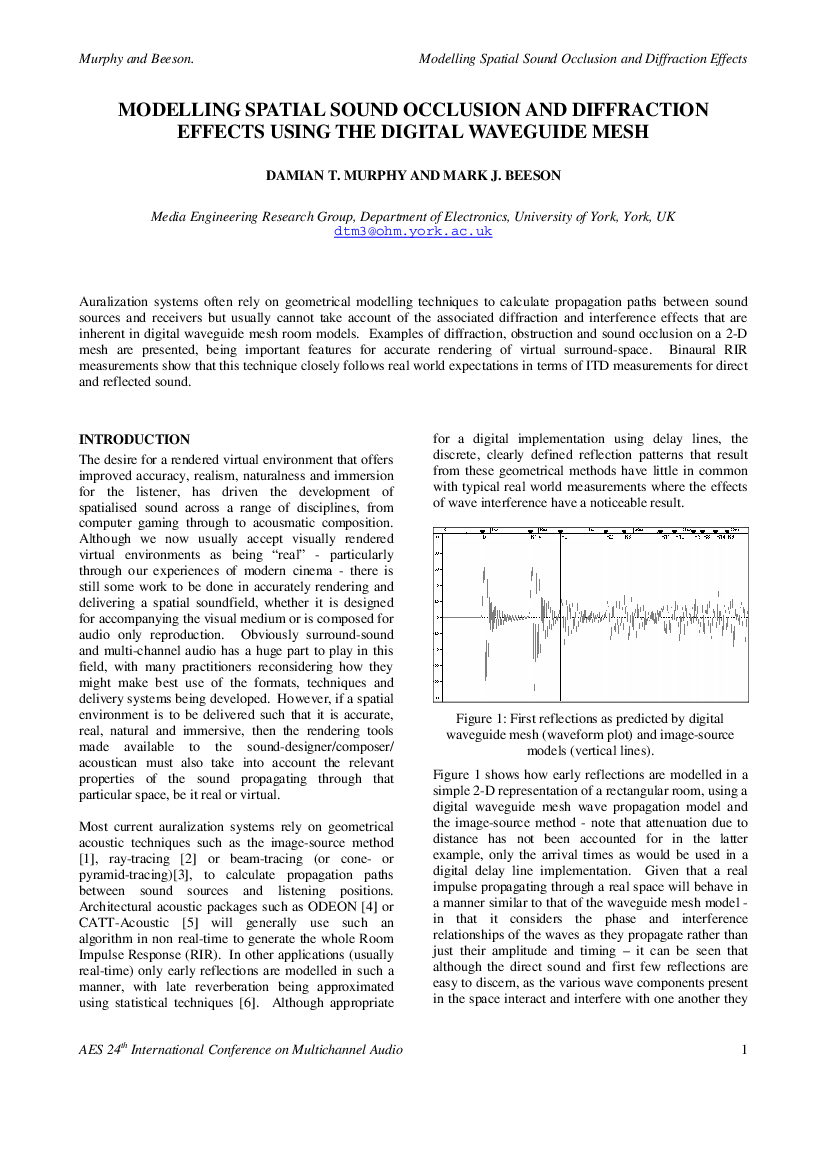Home / Publications / E-library page
You are currently logged in as an
Institutional Subscriber.
If you would like to logout,
please click on the button below.
Home / Publications / E-library page
Only AES members and Institutional Journal Subscribers can download
Digital waveguide mesh structures can be used as an alternative to geometrical acoustics when modelling the spatial and reverberant properties of a space. Wave propagation effects such as diffraction and interference are an inherent feature in these models, enabling sound occlusion and diffraction to be simulated. This results in a more accurate room impulse response measurement, particularly at low frequencies where these effects are especially noticeable.
Author (s): Murphy, Damian T.; Beeson, Mark J.
Affiliation:
Media Engineering Research Group, Department of Electronics, University of York, York, UK
(See document for exact affiliation information.)
Publication Date:
2003-06-06
Import into BibTeX
Session subject:
Multichannel Audio
Permalink: https://aes2.org/publications/elibrary-page/?id=12291
(1673KB)
Click to purchase paper as a non-member or login as an AES member. If your company or school subscribes to the E-Library then switch to the institutional version. If you are not an AES member Join the AES. If you need to check your member status, login to the Member Portal.

Murphy, Damian T.; Beeson, Mark J.; 2003; Modelling Spatial Sound Occlusion and Diffraction Effects Using the Digital Waveguide Mesh [PDF]; Media Engineering Research Group, Department of Electronics, University of York, York, UK; Paper 24; Available from: https://aes2.org/publications/elibrary-page/?id=12291
Murphy, Damian T.; Beeson, Mark J.; Modelling Spatial Sound Occlusion and Diffraction Effects Using the Digital Waveguide Mesh [PDF]; Media Engineering Research Group, Department of Electronics, University of York, York, UK; Paper 24; 2003 Available: https://aes2.org/publications/elibrary-page/?id=12291